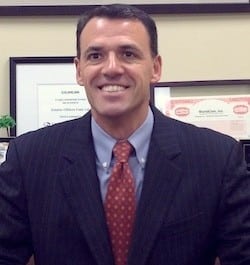
Distressed situations, as when a company is undergoing reorganization under the federal bankruptcy laws, can present golden opportunities for savvy investors who understand the company’s capital structure.
Schultze Asset Management, founded by George Schultze in 1998, seeks to exploit opportunities in distressed securities by investing long and/or short in the securities of companies undergoing restructurings or reorganizations. Its focus is special situation investing in financially troubled and distressed credits.
“We invest long and short up and down the capital structure of U.S. companies, with a special focus on distressed and special situations for investing,” Schultze told Markets Media. “We have about 350 clients from all over the world, everything from high net worth to institutions, some endowments, one state, some pension plans, and some insurance companies.”

George Schultze, Schultze Asset Management
Hedge funds that employ distressed securities investment strategies have fared well this year. “Funds targeting distressed securities are up 5.1% this year, outperforming all other fund categories,” said Sol Waksman, president and founder of BarclayHedge, in a statement. Industry assets climbed to a 5¾-year high of $2.3 trillion in May, according to estimates based on data from 3,426 funds. Assets rose 18% in the past 12 months but were down 6% from the all-time high of $2.4 trillion in June 2008.
Bankruptcy law in the U.S. is a federal law, which means that if a company goes bankrupt, the adjudication of an estate will occur in federal bankruptcy court. “The bankruptcy code governs the redistribution of assets for a bankrupt debtor,” said Schultze, whose firm manages about $250 million.
The easiest way to visualize this is to picture a ladder, with each rung representing a different part of the company’s capital structure. Some companies are inherently more complex than others, but a basic capital structure would include senior secured debt for mortgage paper at the top rung of the capital structure lender, whose holders would be first in line to recover on the assets of a bankrupt company. Down the ladder are unsecured bonds, which are usually publicly traded bonds. At the bottom rung are stockholders, who are always last in line in a bankruptcy.
“In a normal Chapter 11 bankruptcy proceeding, the company would be redistributed from the original equity owners, who are at the bottom rung of the ladder, up to the lenders, depending on how much the company was worth,” said Schultze. “If the whole enterprise was worth $100, and there’s $1000 of debt on the enterprise, then the lenders would get 10 cents on the dollar, and equity holders down at the bottom would lose their investment.”
Distressed investing can be extremely lucrative, but it helps to have a legal background when looking at investing in these kinds of deals. “It’s the ultimate way to find value investing opportunities,” Schultze said. “It’s a bit of an arbitrage, too, in the market, as companies restructure and as fixed income securities get swapped for equity, which is what typically happens in a bankruptcy restructuring.”
The challenge for a distressed securities investor is to form his or her own independent opinion about what the company is worth. Then, after doing that evaluation, thinking about how that value will be redistributed down the bankruptcy waterfall chain, through the bankruptcy process.
“If you’re able to come up with a good opinion about how that will ultimately work out, because it’s a relatively inefficient market, there are often opportunities to make profit by investing long in parts of the capital structure that you think might be undervalued or shorting parts of the capital structure that you think are overvalued,” Schultze said.
Featured image via V&P Photo Studio/ Dollar Photo Club





